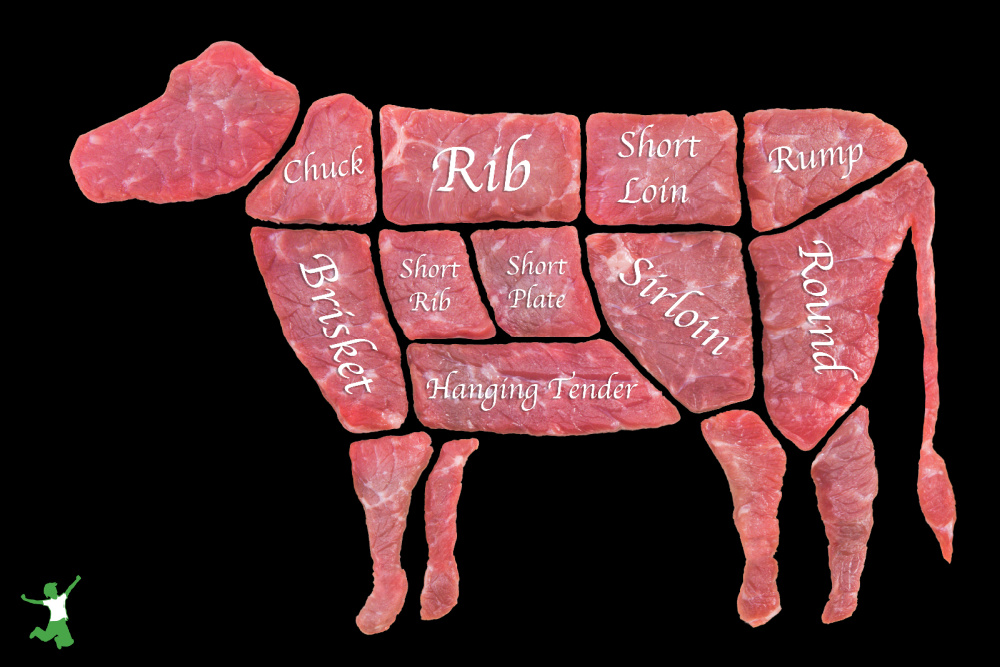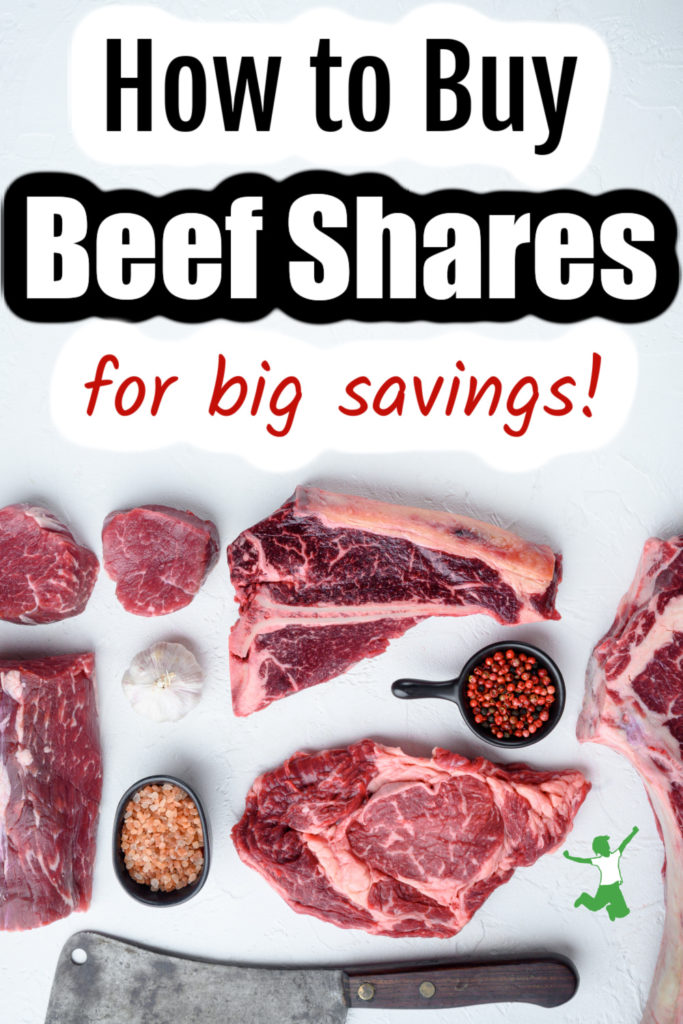How to split a cow and estimate the amount of freezer space necessary to properly store one or more grassfed beef shares to affordably stock up on the best quality meat for your family.

The practice of “splitting a cow” otherwise known as buying beef shares, has been around for decades.
In this inflationary food era with sporadic meat shortages, this frugal method for stocking up on quality beef is gaining greater popularity than ever!
Freezing pastured milk and cream is also becoming a thing due to greater demand combined with seasonal availability issues that normally occur from allowing cows to roam and graze freely year-round.
What is “Splitting a Cow” and How Do You Do It?
I purchased or “split” my first whole cow from a local pastured farm with three other friends in 2002.
By each purchasing 1/4 beef share, we stocked our freezers with enough quality grassfed meat to last 6-12 months.
As a bonus, we got chunks of beef tallow to render at home, nutrient-dense organ meats, and plenty of bones for making homemade gelatin-rich beef broth.
This is what “buying a cow” means. You get everything, not just the muscle meat.
Coordinating with a Butcher
The downside to splitting a cow yourself or with a few friends is that you have to coordinate with the local butcher to get everything cut up the way you like it.
There are many questions that are necessary to have this process done correctly.
For example, the butcher will want to know how many steaks you want versus roasts, stew chunks, and ground beef. You will also need to decide how thick you want the steaks cut, and so on.
For a first-time buyer, this process can be a bit overwhelming. It certainly was for me!
Beef Shares Simplifies the Process
To make things easier, local beef farms are now offering “beef shares”.
This is an easier way to purchase a portion of a whole cow where everything is already cut up and properly wrapped for months-long storage without freezer burn. The consumer simply chooses the size beef share they want.
This could be as small as a 10-pound box all the way up to a half or whole beef share (entire cow).
If you don’t have a pastured beef farm near you, you can now buy beef shares online for added convenience.
Save Big
Buying beef shares especially from a local farm near you where you pick it up yourself, can mean big savings.
Combining this sustainable method for stocking up with cooking meat in a frugal manner can make all the difference for tight budgets.
What Size Freezer is Required for a Beef Share?
A common deterrent to potential customers buying beef shares is uncertainty about how much freezer space is required.
If this has been a concern of yours in the past, here is an easy breakdown of what is required for each size beef share.
- 10 pound and 20 pound beef boxes will easily fit in a regular freezer compartment.
- 1/8 Beef Share will also fit in the regular freezer compartment of a refrigerator.
- 1/4 Beef Share will require a freezer capacity of 3 – 4 cubic feet (small chest freezer).
- 1/2 Beef Share will require freezer capacity of 6 – 8 cubic feet (small-medium chest freezers).
- Whole beef share (entire cow) requires freezer capacity of 12-16 cubic feet (large chest freezers).
Get More Space Very Affordably!
If you don’t currently have extra freezer capacity for storage of beef shares, let me suggest a few tips for affordable ways to upgrade.
Used Appliance Stores
When I purchased my 1/4 beef share back in 2002, I went to the local scratch and dent appliance store first. I quickly found a small chest freezer with 5 cubic feet of capacity for $25.
This used chest freezer lasted for 15 years!
Existing Home & Estate Sales
When this small chest freezer broke, we replaced the lost freezer space by helping out a neighbor who bought a house nearby that had an extra refrigerator in the garage he didn’t want.
We came and took it away, and voila! We had more freezer space for free.
Online Options
While used chest freezers or refrigerators are more expensive today, it is worth a phone call to your local used appliance store. You could also scan Facebook Marketplace or Craigslist for freezers that are for sale.
I got a used office-sized refrigerator that was in fantastic condition for my son’s college dorm room for $50 from Facebook Marketplace. The same model new was $250.
The bottom line is that you don’t have to buy freezers new to be able to store your beef shares!
Have you ever split a cow as a more sustainable and affordable way to buy beef? Please share any tips you might have from your own personal experience!









Leave a Reply